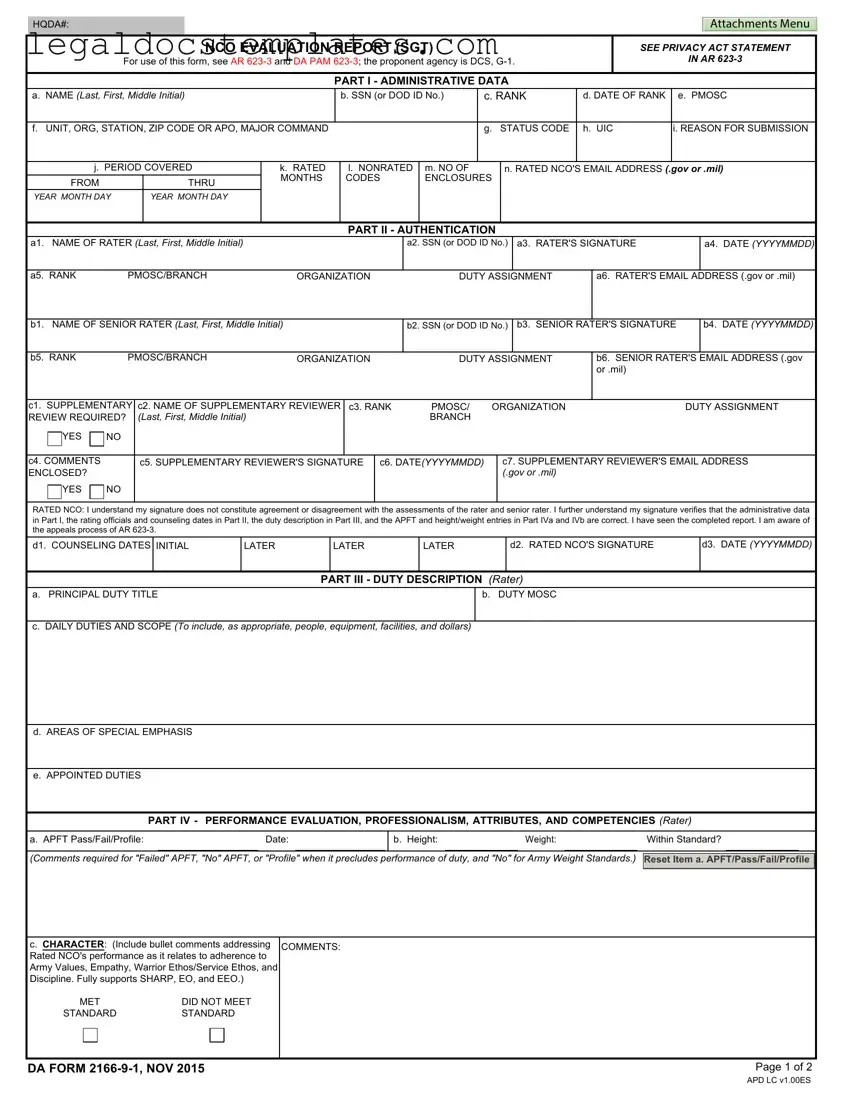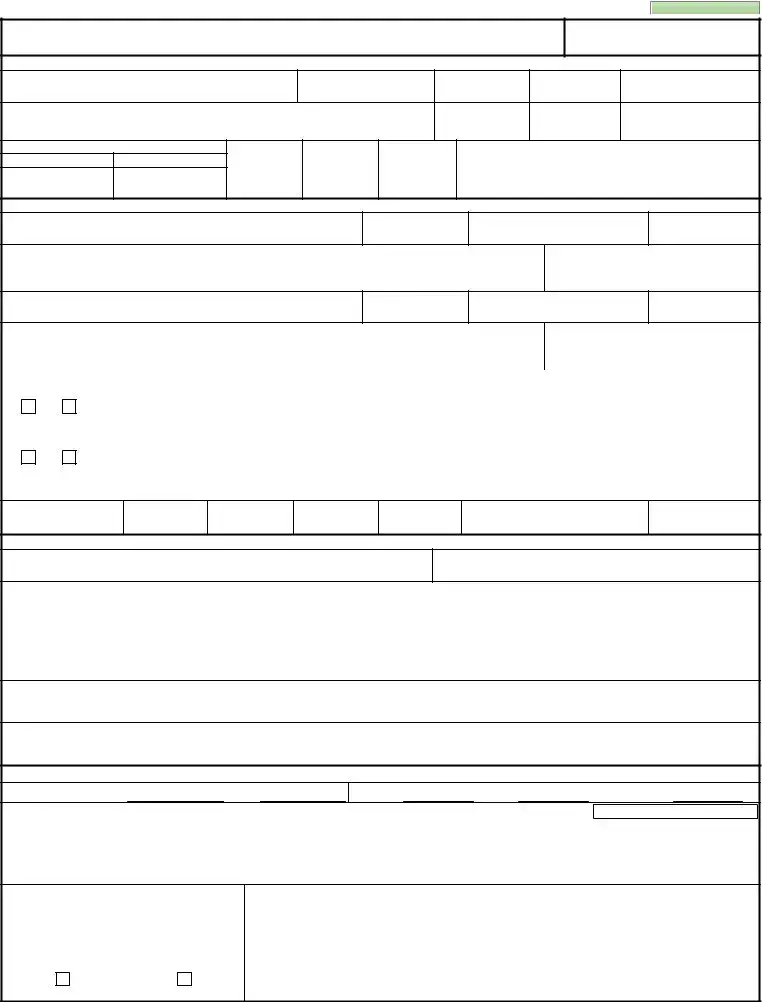One document similar to the DA Form 2166-9-1 is the Officer Evaluation Report (OER), used within the U.S. Army to evaluate officers' performance and potential. Both forms are integral to the Army’s Evaluation Reporting System, guiding decisions on promotions, assignments, and professional development. However, the DA Form 2166-9-1 focuses on non-commissioned officers (NCOs), while the OER targets commissioned officers. They share structural similarities, including sections for administrative data, performance evaluation, and the assessment of future potential, ensuring a comprehensive review of military personnel’s capabilities and achievements.
Another related document is the Navy Fitness Report (FITREP), used for evaluating naval officers' performance. Comparable to the DA Form 2166-9-1, the FITREP includes sections for personal and professional data, duty performance evaluation, and recommendations for future assignments. Both forms play a critical role in career progression, focusing on leadership qualities, professional expertise, and the ability to achieve mission objectives. The emphasis on performance metrics and the impact on promotions and assignments underline the significance of these evaluations in military personnel management.
The Air Force Enlisted Performance Report (EPR) serves a similar function for assessing enlisted airmen, paralleling the DA Form 2166-9-1's use for Army NCOs. Both documents detail the service member's duties, responsibilities, and performance over the evaluation period, highlighting achievements and identifying areas for improvement. The EPR and the DA 2166-9-1 contribute to decisions on promotions, special assignments, and professional development opportunities, reflecting the military's investment in a merit-based evaluation system.
The Civilian Performance Appraisal Form is used by various branches of the U.S. military to evaluate civilian employees. Although it assesses civilian rather than military personnel, it resembles the DA Form 2166-9-1 in structure and intent. Both forms outline objectives, performance assessments, and future goals to ensure alignment with organizational priorities. The focus on clear standards and measurable achievements underscores the comprehensive approach to evaluating contribution and potential across the military environment.
The Marine Corps Fitness Report (FITREP) for evaluating the performance of Marine officers shares several similarities with the DA Form 2166-9-1. It not only assesses performance based on duties and responsibilities but also considers leadership qualities, professional competence, and potential for future assignments. Both documents impact personnel decisions such as promotions and assignments, emphasizing the importance of leadership and mission accomplishment in military career progression.
The Coast Guard Officer Evaluation Report (OER) closely mirrors the DA Form 2166-9-1 in its aim to provide a consistent assessment of officers' performance and potential. It gathers data on leadership, professional skills, and missions’ accomplishment, which is essential for career development decisions. Although tailored to the unique operations and objectives of the Coast Guard, the overarching goal of facilitating organized review and feedback is shared with the Army's evaluation process for NCOs.
The Army Developmental Counseling Form (DA Form 4856) complements the DA Form 2166-9-1 by providing a structured framework for NCOs and other Army personnel to receive feedback and guidance. While the DA 4856 is more focused on individual counseling sessions, it closely relates to the evaluation process by highlighting areas of strength and improvement, setting the stage for professional growth and enhanced performance that will be formally evaluated in the DA 2166-9-1.
Lastly, the Individual Training Record, used across military branches, though not a direct evaluation form, supports the objectives of the DA Form 2166-9-1 by documenting the training and qualifications of service members. This record informs parts of the evaluation process by providing evidence of professional development and skill acquisition that are crucial for comprehensive performance assessment and career advancement decisions within the military structure.


